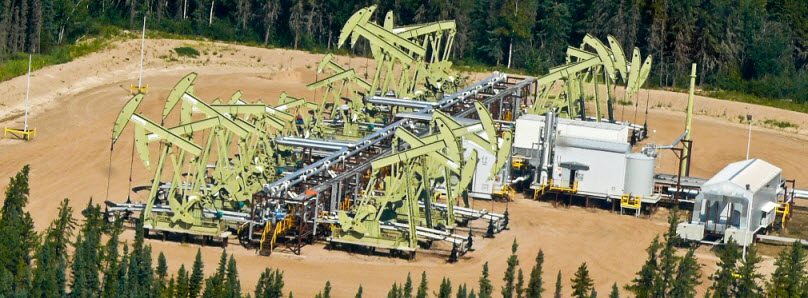Despite rebounding oil royalties, balanced budget out of reach for Alberta – Conference Board

Royalties Energy.Alberta.ca photo.
Containing health spending (48% of provincial expenditures) key to Alberta achieving deficit-reduction target
A slow rebound in royalties and corporate tax revenues will help shrink Alberta’s deficit over the coming years, according to the Conference Board of Canada.
But the process will be slow and the deficit is expected to remain around $6.8 billion by 2019–20.
In that time, net debt will balloon from $9.5 billion to $44 billion—and debt charges will double from $1 billion to $2.3 billion, according to The Conference Board of Canada’s Alberta Fiscal Snapshot.
 “The turnaround in revenue growth is good news for Alberta. However, Alberta will have difficulty balancing its books in a timely fashion due to its dependence on volatile resources royalties to fund their operating expenditures and some of the highest per capita spending in the country,” said Marie-Christine Bernard, Associate Director, Provincial Forecast.
“The turnaround in revenue growth is good news for Alberta. However, Alberta will have difficulty balancing its books in a timely fashion due to its dependence on volatile resources royalties to fund their operating expenditures and some of the highest per capita spending in the country,” said Marie-Christine Bernard, Associate Director, Provincial Forecast.
After falling by 13.0 per cent from its 2014–15 level in 2016–17, Alberta’s government revenues are expected to grow by an average of 6.1 per cent over the next three fiscal years.
“The end of the commodity super-cycle means the province must address both revenues and spending to bring its finances back to balance,” said Bernard.
Nearly two-thirds of this revenue growth will come from increased royalties, revenues from the provincial carbon tax, and higher corporate taxes. Resource royalties are estimated to reach $6.1 billion by 2019–20, still below the average $9.2 billion seen between 2010–11 and 2014–15.
Contributing to Alberta’s continued deficits is a relatively high level of health care spending.
In 2014, age-adjusted health care spending per capita in Alberta was $5,178, highest out of all the provinces and 34 per cent above the national average.
Last fiscal year, 48 per cent of every revenue dollar earned by the province was dedicated to health care spending.
Containing growth in health spending will be key to the province achieving its deficit-reduction target.
The provincial government plans to keep program spending increases capped at 1.9 per cent over the next three fiscal years by limiting growth in health care and education spending.
The government plans to keep health care spending increases to an average annual pace of about 2.9 per cent over 2017-18 to 2019-20, a significant slowdown from the average annual rate of 6.7 per cent in the last 10 years.
Meanwhile, the Conference Board projects that health care spending in Alberta would have to grow by an average pace of 4.8 per cent per year over the next two fiscal years just to keep pace with inflation and demographic changes in the province.
The provincial budget also intends to expand education spending at a rate of 2.4 per cent per year over the next three years.

Given Alberta’s strong population growth, the Conference Board estimates education spending needs to increase at an average annual rate of 3.8 per cent to maintain real spending per student.
Outside of health care and education, the provincial government plans to keep program spending basically flat at 0.14 per cent average annual growth over the next three years.






